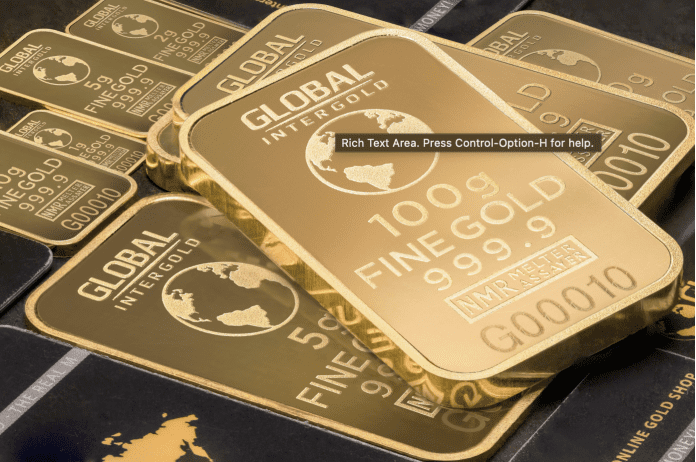For centuries, global finance has maintained an almost spiritual position regarding gold. Humans have treasured gold because it functions as value protection during inflation while representing financial wealth through historical market stability. The question about gold remaining the king emerges in the second quarter of 2025 because of speedily advancing technology, increasing geopolitical risks, and unsettled central bank policies.
Current evidence indicates that gold continues to dominate the financial world with no signs of changing. The market spotlight has shifted to precious metals, specifically gold, the primary leader. Rising prices have reached almost historical peaks because investors need protection from soaring inflation rates, currency value reductions, and unpredictable markets.
The demand for silver, platinum, and palladium has witnessed a comeback during this period, too. Global economic turbulence has prompted investors to return to gold because they see it as their fundamental protection against financial turbulence.
For example, global market participation has surged because platforms like Exness online trading in Kenya and other locations now use computer-based trading to buy gold and silver as portfolio protection against market volatility, currency weakness, and inflation risks.
Alternative assets have generated increased demand, which drives new financial industry innovations. Modern traders now choose commodity trading platform with tech-powered features such as fractional trading, real-time data, and low-fee access to precious metals because they need quick and modern solutions.
Why Gold Is Back on Top in 2025
A distinctive mixture of international market influences developed into the recent surge in gold values. Emerging market central banks show extreme interest in acquiring record amounts of physical gold commercially. The strategy started in 2022 has strengthened because countries want to cut their dependence on U.S. dollars while protecting themselves from economic risks. Diversification of physical gold reserves continues to rise in China, Russia, and Brazil because these countries adapt their geopolitical and financial strategies.
Gold trading in Kenya, market trends, influential factors
Central banks experience enduring inflation that exceeds their official target levels across various regions. Years of rapid interest rate increases followed by contrary policy shifts have caused investors to choose gold to maintain their purchasing ability. Clean and varied sources drive the rising demand for gold in the market. Retail investors decide to invest in precious metals, which they access through electronic fund trust (ETFs) products, futures agreements, and digital tokens of gold, to counter equity market instability and slothful bond yield performance.
In early 2025, the United States dollar demonstrated fading power as a protection against gold reserves. The dollar faces growing erosion because politicians added fresh elements of uncertainty to Washington, and the United States continues to increase its indebtedness. Because of such economic conditions, gold becomes increasingly attractive as an inflation-resistant non-sovereign asset.
Silver, Platinum, and the Green Energy Factor
The price of silver and gold keeps increasing during its buoyant market phase. Silver benefits the green energy revolution because it combines industrial importance with its precious metal value. Solar panel manufacturers rely on silver as a fundamental aspect, so demand continues to expand quickly due to government initiatives for solar power adoption. The market sees rising prices because tight supply conditions join forces with increasing demand.
Platinum and palladium, which once served as automotive catalysts, now find new markets in the hydrogen-powered and hybrid vehicle sectors. Modern innovations in clean energy storage systems, together with new fuel cell technologies, are developing new markets for these metals despite the ongoing transformation of the electric vehicle industries.
Market conditions indicate that precious metals could experience widespread growth beyond just gold during 2025. The global economy’s demand for alternative solutions suggests that this development marks only the start of such opportunities.
The Digital Age of Precious Metals Trading
Modern investors no longer need to buy traditional gold bars or coins for their purchases. As market technology advances, customers trade precious metals in more complex ways. Modern investors holding tokens backed by gold reserves can access new entrance points that leverage blockchain technology. Digital assets unite the fundamental worth of gold through the trading convenience of crypto-like assets.
The number of users who sign up for resources that enable precious metal trading through derivatives, ETFs, and CFDs has reached all-time highs. The appeal lies in accessibility. A smartphone provides traders across Nairobi, Mumbai, and Manila with market exposure that matches the capabilities of New York and London institutions.
Due to this democratization process, the commodity trading sector is receiving its modern transformation. New participants from regional and local areas are joining combinatorial markets, which now introduce distinct strategic elements alongside market shifts for this space. The entry threshold remains at an all-time low because AI analytics, together with automated trading assets, are now standard tools available to the market.
The Long-Term Outlook: Is Gold Here to Stay?
Gold maintains its enduring value because its rare nature combines with its fluid exchangeability and famous historical utility. The metal operates independently because it never defaults and never loses value while enduring any institutional insolvency. The modern, high-risk digital world needs these qualities more than ever before.
Although changes are happening within this system, the basic position of gold as a safe-haven asset continues to exist, but it now must share the spotlight with new commodity assets. New assets made from digital technology and sustainable investments now challenge traditional financial methods because they offer real-time market transparency. The new market participants function as partners that assist gold rather than taking away its throne.
People now use precious metals to make decentralized finance systems and ESG investment solutions along with jewelry and vault storage. The value of gold continues to rise as the global market transforms into an uncertain space.
The current year of 2025 has proven gold holds more prominence than mere survival as it advances toward prosperity. Untamed turmoil has exposed the expanding glory of precious metals in the global market. The most fascinating aspect of gold’s continued market supremacy lies in how all sector segments adapt to the trading systems of this new period.
Today’s Financial strategies center around gold bullion with its metal relatives and blockchain digital tokens through which retail investors now participate. Central banks and individual retail customers play active roles in the gold market. The message through which ancient and present investors and novices equally receive is that although gold has roots in antiquity, its power will not wane.








